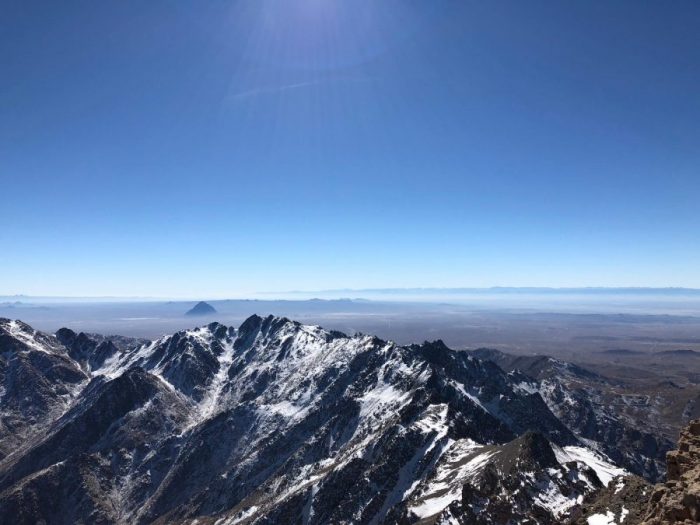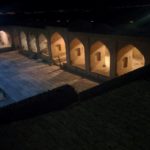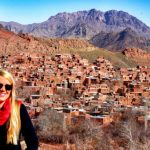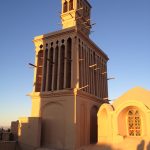This page contains a list of the highest peaks and mountains in Iran.
In general, a mountain is a single ridge of land that is surrounded by plains and is more than 600 meters high. The peak is also the highest part of the mountain, a hill or a rough terrain. In fact, the principle of “loneliness” is very important in the definition of a mountain, not a height. Everest, at 8,848 meters, is the world’s highest mountain, and K2, at 8,111 meters, is the second-highest mountain in the world, while the world’s second-highest peak after Everest is one of the sub-peaks of Mount Everest, which is not an independent mountain but its height. It is more than K2.
| * | Mountain | Height | The main mountain and sub-mountain range |
| 1 | Damavand | 5,610 | Alborz Central Alborz |
| 2 | Alam Kooh | 4,850 | Alborz Takht Soleiman |
| 3 | Sabalan | 4,811 | Alborz Sabalan |
| 4 | Shakhak (5 peaks) | 4,795 | Alborz Takht Suleiman |
| 5 | North Khorsan | 4,680 | Alborz Takht Soleiman |
| 6 | South Khorsan | 4,659 | Alborz Takht Soleiman |
| 7 | Takht-e Soleiman | 4,659 | Alborz Takht-e Soleiman |
| 8 | Siah Sang | 4,604 | Alborz Takht Soleiman |
| 9 | Pyramid (Heram) | 4,587 | Central Mountains of Sabalan |
| 10 | Marji Kash | 4,580 | Alborz Takht Soleiman |
| 11 | Kasra | 4,577 | Central Mountains of Sabalan |
| 12 | Haft Khan | 4,537 | Alborz Takht Soleiman |
| 13 | Chalon | 4,516 | Alborz Takht Soleiman |
| 14 | Mount Hazar | 4,500 | Central Mountains of Mount |
| 15 | Siah Gog | 4,500 | Alborz Takht Soleiman |
| 16 | Siah Kaman | 4,472 | Alborz Takht Soleiman |
| 17 | Mish Chal | 4,470 | Alborz Takht-e Soleiman |
| 18 | Shaneh Kooh | 4,465 | Alborz Takht-e Soleiman |
| 19 | Rostam Nisht | 4,426 | Alborz Takht-e Soleiman |
| 20 | Ghash Mastan (Bijan 3) | 4,412 | Zagros Dena |
| 21 | Callo | 4,412 | Alborz Takht Soleiman |
| 22 | Shah Mountain (Lalehzar) | 4,402 | Central Mountains Shah Mountain |
| 23 | snowballs (Kale barfi ) | 4,392 | central mountains Shah Mountain |
| 24 | Moor Gol | 4,380 | Zagros Dena |
| 25 | Minar | 4,378 | Alborz Takht Soleiman |
| 26 | Khalono Bozorg | 4,375 | Alborz Khalno |
| 27 | mung bean (Bijan 1) | 4,370 | Zagros Dena |
| 28 | Azadkooh | 4,355 | Alborz Khalno |
| 29 | Nenok | 4,351 | Central Mountains of Shah Mountain |
| 30 | Yapragh | 4,350 | central mountains of Sabalan |
| 31 | Marie’s Head | 4,349 | Central Mountains Shah Mountain |
| 32 | Khalno Kochak | 4,348 | Alborz Khalno |
| 33 | Meian Se Chal | 4,348 | Alborz Takht Soleiman |
| 34 | Se Ghopeh Asemani (Bijan 2) | 4,340 | Zagros Dena |
| 35 | Two Western Sisters | 4,338 | Alborz Two Sisters |
| 36 | Tange Galoo | 4,335 | Alborz Takht Soleiman |
| 37 | Thousand Cham | 4,317 | Alborz Takht Soleiman |
| 38 | Hera East | 4,310 | Zagros Dena |
| 39 | Two Oriental Sisters | 4,310 | Alborz Two Sisters |
| 40 | Ben Ro | 4,300 | Zagros Dena |
| 41 | Central Dahl Basin | 4,300 | Zagros Dena |
| 42 | Levi Na | 4,300 | Alborz Takht Soleiman |
| 43 | Star ( Setare) | 4,296 | Alborz Takht Soleiman |
| 44 | Borj ( Tower) | 4,293 | Alborz Khalno |
| 45 | Hera West | 4,280 | Zagros Dena |
| 46 | total nightingale | 4,280 | Zagros Dena |
| 47 | Laghas Sugar (Great Observer) | 4,278 | Alborz Two Sisters |
| 48 | Hurricane Mountain | 4,268 | Alborz Khalno |
| 49 | Chapkro | 4,260 | Alborz Two Sisters |
| 50 | Kaleh Gardanak | 4,260 | Alborz Takht-e Soleiman |
On this page, 50 mountains and peaks with a height of 4000 meters (13,123 feet) and more are listed in Iran. It should be noted that the peaks above 4,000 meters in Iran are estimated to be more than 600 peaks, but not all of them are necessarily mountains. For this reason, and also due to the lack of a precise and official definition for the peak of the mountain, the number of peaks of four thousand meters in Iran is approximate. Also, relative altitude is an important factor in determining the peak of a mountain. This list is not only based on relative altitude, but also other indicators such as morphology (general appearance) and mountaineering attraction. Determining the minimum relative altitude of 500 meters will reduce the number of mountains by 4,000 meters.
An explanation of the mountains of Iran
The mountains, which consist of the four main arches of the north, Zagros, Khavari, and Markazi, have made Iran a mountainous land with many peaks more than 3,500 meters high.
The distances between the high arches are high valleys and plains and salt marshes, sand dunes and many salt lakes such as desert plain, Lut desert, salt sea, Hamoon, Jazmourian, Gavkhoni swamp, Siah Kooh desert, desert in fig, salt desert Sirjan, and Gol Square, etc. are covered with a minimum height of more than 350 meters. Alborz mountains are the cradle of northern beauties and many green cities and villages of the country are located in its lap.
Zagros Mountain, which is one of the most magnificent and largest mountain ranges in the world, is the source of Iran’s largest rivers and shelters more than half of the country’s cities and residential areas, and many of its areas are equal to the most beautiful areas in the world.
The central mountain range, which rises as a barrier in front of the plains and central deserts, has protected its refugees from the scorching heat of summer and the deadly cold of the central plains, and sometimes spreads its blessed reader into the inland plains.
What can be called Iranian mountaineering 8 parts are as follows:
Alborz Mountains
Zagros Mountains
Continuous Central Mountains
Mountains of Khorasan
Kerman mountains
Mountains of the border strip of West Azerbaijan
Mountains of Kurdistan and Lorestan
Single peaks

The mountains of the above-mentioned part are scattered, the main places of concentration should be considered in Alborz and Zagros.
Alborz Mountains:
It starts from the south of Astara city and with a high arc it covers the whole coast of Mazandaran to move closer to Azadshahr city.
These mountain ranges have very compact structures with a width of approximately 100 to 150 km, which is more visible from the central area and is more widespread in other areas. In this mountain range, where Damavand Bam Peak of Iran is located with a height of 5619 meters, it has many short and long heights, which after Damavand can be named as Shahvar, Mazda, Dobarbar, Azadkooh, Dokhahravan, Alam Kooh and He named Shah Alborz and Sedan.
The structure of Alborz consists of 5 parts as follows, which are from east to west:
A: East Alborz
B: Firooz Kooh field
A: Central Alborz
D: West Alborz
E: The mountains of Gilan
Zagros Mountains:
The Great Zagros Range forms the boundary between the plains of Khuzestan and Iraq to the central regions of Iran. This mountain range is formed by a vast expanse from northwest to southeast of mountain ranges and ridges. Due to reaching 3 important mountainous areas from the point of view of climbers, namely Oshtrankooh peaks and mountain rugs and Zardkuh Bakhtiari and Dena ridges, it can be divided into 3 main centralized parts, which cover most of the climbers’ climbs in Zagros. These three mountainous areas, which extend from north to south, can be named as North, Central, and South.
The northern part includes important peaks such as Oshtrankooh with the glory of San Bazan Peak 4150 meters and Fali Kuh 4110 meters and other peaks. The central part with the high yellow peak of Bakhtiari mountain with a height of 4221 meters and Shah Shahidan peak 4150 meters and Haft Tanan 4150 meters and other peaks such as Fardan and Garbush Kooh and finally the southern part which extends to the big city of Shiraz and a little further to Darab Among the most important peaks, we should mention Mastan 4500 meters, Morgel 4450 meters, Bel Eghlid 4150 meters and Ranj peaks, Sefid Kooh, Khatoon, Neil, Rig and…














